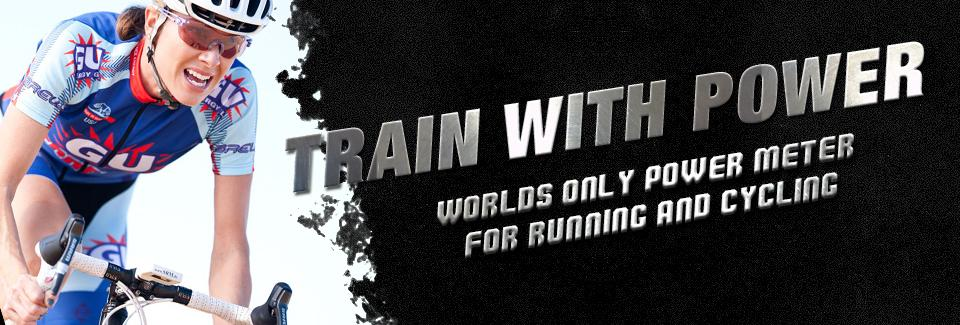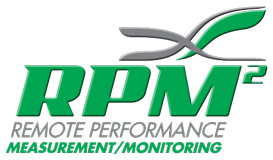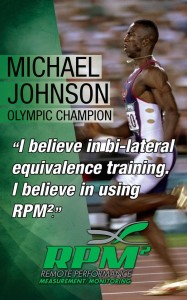 Just last week, MedHab officially announced a partnership with Michael Johnson and Michael Johnson Performance, Inc. Michael Johnson, is a world record holder and Olympic champion and is founder and president of Michael Johnson Performance, an athletic performance organization based in McKinney, Texas. Michael Johnson Performance provides training for professional athletes of all sports as well as youth athletic training programs. Michael Johnson Performance is a global organization with operations and clients in China, Europe, South America, and the Caribbean.
Just last week, MedHab officially announced a partnership with Michael Johnson and Michael Johnson Performance, Inc. Michael Johnson, is a world record holder and Olympic champion and is founder and president of Michael Johnson Performance, an athletic performance organization based in McKinney, Texas. Michael Johnson Performance provides training for professional athletes of all sports as well as youth athletic training programs. Michael Johnson Performance is a global organization with operations and clients in China, Europe, South America, and the Caribbean.Nov 10
MedHab Announces Partnership with Michael Johnson and Michael Johnson Performance, Inc.
 Just last week, MedHab officially announced a partnership with Michael Johnson and Michael Johnson Performance, Inc. Michael Johnson, is a world record holder and Olympic champion and is founder and president of Michael Johnson Performance, an athletic performance organization based in McKinney, Texas. Michael Johnson Performance provides training for professional athletes of all sports as well as youth athletic training programs. Michael Johnson Performance is a global organization with operations and clients in China, Europe, South America, and the Caribbean.
Just last week, MedHab officially announced a partnership with Michael Johnson and Michael Johnson Performance, Inc. Michael Johnson, is a world record holder and Olympic champion and is founder and president of Michael Johnson Performance, an athletic performance organization based in McKinney, Texas. Michael Johnson Performance provides training for professional athletes of all sports as well as youth athletic training programs. Michael Johnson Performance is a global organization with operations and clients in China, Europe, South America, and the Caribbean.Oct 27
Do Runners Need Gait Analysis?
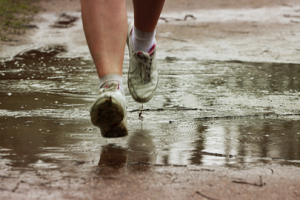 Endurance athletes have likely heard the words “gait analysis” at some point or another in their athletic careers. The use of gait analysis to study the way people move is gaining momentum—especially in the world of professional sports. In recent years, more physicians, therapists, and athletic trainers have recognized the importance of monitoring and analyzing the gait to help improve performance and reduce wear and tear on the body. Here we address a few common questions regarding gait analysis.
Endurance athletes have likely heard the words “gait analysis” at some point or another in their athletic careers. The use of gait analysis to study the way people move is gaining momentum—especially in the world of professional sports. In recent years, more physicians, therapists, and athletic trainers have recognized the importance of monitoring and analyzing the gait to help improve performance and reduce wear and tear on the body. Here we address a few common questions regarding gait analysis.
What does gait analysis actually mean?
First, let’s define gait. When it comes to athletes, gait is defined as how the entire body moves to facilitate foot movements. To analyze gait, trainers and physicians look at the body as a system. In addition to monitoring foot movement, trainers and sports medicine professionals look at other factors including weight distribution, cadence, stride, and the positioning of the hips and knees during movement.
Gait analysis, along with other data, can essentially provide a detailed account of an athlete’s unique system of movement that relates to flexibility, strength, and stability during performance.
What can gait analysis reveal?
Gait analysis can reveal biomechanical issues that may impede performance and even lead to injuries. For instance, gait analysis can pinpoint compensations—such as alteration in posture and mechanics to compensate for a weak or injured part of the body. Over time, unaddressed compensations can lead to habitual patterns. Once compensations become bad habits, athletes are typically unaware of the impact incorrect movement has on performance and recovery.
Today, products are available to help athletes analyze their performance without the need for hours-long tests in clinical settings. With RPM²’s revolutionary footbeds, athletes perform pre-set exercises that measure cadence, step time, and gait. The data is then available for view through an application compatible with iOS and Android operating systems. To learn more, visit our secure online store.
Oct 20
Incidence of Injury and a Runner’s Gait
Can injury and discomfort during running be prevented by adjusting a runner’s gait? In the past, our posts have discussed the importance of gait analysis and fluid biomechanical movement. We have also discussed common injuries among triathletes and long distance runners such as plantar fasciitis, shin splints, and runner’s knee. When it comes to injury among endurance athletes, the common perception was that the physical activity of running or cycling wore down the joints and tore muscles. The idea that endurance training itself is the source of injury is quickly becoming a notion of the past. A recent article published by the Wall Street Journal offers a different point of view that aligns with our mission and products.
Injury Prevention and Gait
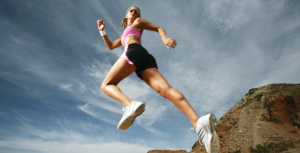 According to the Wall Street Journal, injury among runners is quite high, with injury rates reaching up to 90% among marathon runners. Citing experts and orthopedic doctors, the article explains how important gait analysis is to injury prevention. Instead of entertaining the notion that wear and tear on joints and ligaments is caused by running, the conclusion based on the author’s research points to issues with gait, including runners striding “out too far” and landing with the legs “at awkward angles.”
According to the Wall Street Journal, injury among runners is quite high, with injury rates reaching up to 90% among marathon runners. Citing experts and orthopedic doctors, the article explains how important gait analysis is to injury prevention. Instead of entertaining the notion that wear and tear on joints and ligaments is caused by running, the conclusion based on the author’s research points to issues with gait, including runners striding “out too far” and landing with the legs “at awkward angles.”
While gait analysis is cutting-edge and not as widely available at sports medicine centers, many experts believe that properly analyzing gait can identify the underlying cause of an injury and even prevent injury by identifying bad habits. By analyzing gait and correcting mechanical issues, it is more possible than ever before for endurance athletes to train and perform with little to no pain.
RPM² Provides Gait Analysis to Endurance Athletes
Our product, RPM², analyzes runners’ and cyclists’ step time and weight distribution along with providing data that relates to gait. Delivering data to your smartphone or tablet, our products can help you and your trainer identify mechanical issues so that you can adjust your training habits for better performance.
Oct 13
Staying Hydrated: Coconut Water vs. Sports Drinks
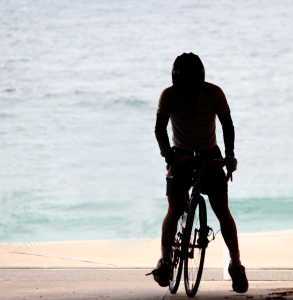 Once only found in tropical locales or health food stores, coconut water is now readily available at mainstream supermarkets, often displayed prominently near the checkout area in colorful cartons that resemble juice boxes. You may wonder if its prevalence is due to heavy marketing campaigns or because of a real consumer demand. Some health experts call coconut water “nature’s sports drink” and claim that it is healthier all around than commercially prepared sports beverages, but does the product live up to the hype, or should you stick to your old standbys for electrolyte replacement?
Once only found in tropical locales or health food stores, coconut water is now readily available at mainstream supermarkets, often displayed prominently near the checkout area in colorful cartons that resemble juice boxes. You may wonder if its prevalence is due to heavy marketing campaigns or because of a real consumer demand. Some health experts call coconut water “nature’s sports drink” and claim that it is healthier all around than commercially prepared sports beverages, but does the product live up to the hype, or should you stick to your old standbys for electrolyte replacement?
What Is Coconut Water?
Coconut water is the liquid found inside of young, green coconuts. In tropical countries, it is often sold fresh on the streets and is touted as not only a refreshing beverage but also a great source of potassium and sodium, two important electrolytes that are also found in sports drinks. Eight ounces of fresh coconut water has 46 calories and contains 250 milligrams of sodium, 600 milligrams of potassium and 9 grams of carbohydrates. Commercially prepared coconut water has roughly the same nutritional content except for sodium levels, which average only about 30 milligrams per 8 ounces.
How Do Sports Drinks and Coconut Water Compare?
Compared to your favorite sports drinks, coconut water is considerably lower in sodium and carbohydrates, both of which are critical to replenish your body after a grueling workout. This is especially true for runners and triathletes who train for 90 minutes or longer per session. While coconut water is an excellent source of hydration and potassium, sports drinks are better sources of electrolytes—especially sodium—and easily absorbed carbohydrates that give you a burst of energy after a workout. The high price of coconut water, which runs around $2 to $3 per serving, may also prevent you from reaching for it on a regular basis. If you do choose coconut water over a sports drink, however, you can always supplement it with a snack containing carbs and salt to make up the difference.
Just as staying hydrated and replenishing electrolytes are crucial for a superior athletic performance, maintaining proper biomechanics when running and biking can take you to the next level. Explore our website to find out how our state-of-the-art footbeds can help you achieve the ideal form, and follow us on Facebook and Twitter for more tips on hydration and nutrition.
Oct 06
Common Injuries in Runners: Runner’s Knee
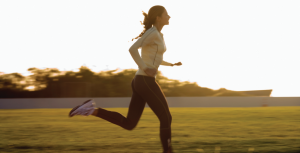 As the name suggests, runner’s knee is a common injury among runners, and it accounts for about 20 percent of running injuries. The condition also affects other types of athletes who frequently bend their knees, including cyclists. The official name of this injury is patellofemoral pain syndrome (PFPS), and it is characterized by pain around or behind the kneecap. Runner’s knee can stem from a number of causes, including flat feet, tight or weak thigh muscles, acute trauma to the knee, overstretched tendons, worn cartilage, or misalignment of the structures of the knee.
As the name suggests, runner’s knee is a common injury among runners, and it accounts for about 20 percent of running injuries. The condition also affects other types of athletes who frequently bend their knees, including cyclists. The official name of this injury is patellofemoral pain syndrome (PFPS), and it is characterized by pain around or behind the kneecap. Runner’s knee can stem from a number of causes, including flat feet, tight or weak thigh muscles, acute trauma to the knee, overstretched tendons, worn cartilage, or misalignment of the structures of the knee.
What Are the Signs of Runner’s Knee?
Symptoms of PFPS include pain that can manifest in different areas around or behind the patella (kneecap), most notably when you bend your knee. The pain can occur during intense physical activity as well as when you are merely walking or sitting. The pain often worsens when you go up and down stairs or walk on an incline. Swelling and popping sensations in the knee may also occur. A physician can determine if you have runner’s knee by performing a physical exam and diagnostic tests such as X-rays, MRIs, and CT scans.
How Is Runner’s Knee Treated?
Treatment for PFPS depends on the root cause of the pain. Acute measures consist of stopping the activity that is causing the pain and using the RICE formula: rest, ice, compression, and elevation. After the pain and swelling have subsided, your doctor will likely recommend the most conservative treatments possible, which may include special exercises to strengthen and stretch the muscles and the use of custom orthotics to help place your feet or legs in proper alignment. If noninvasive measures do not alleviate the problem, surgery may be recommended.
Of course, the best option is to prevent runner’s knee from developing in the first place by making proper running mechanics a priority. At RPM2, we are dedicated to helping high-performance athletes achieve bilateral equivalence with our innovative remote performance monitoring footbeds. Check out the educational materials on our website today to learn how we can help you prevent injuries and achieve the best performance possible.
Sep 26
Tips for Maintaining a Healthy Immune System for Endurance Athletes
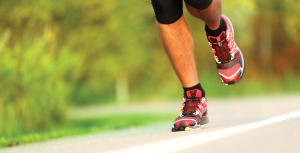 Endurance athletes commit to rigorous training to improve their performance. While year-round conditioning and strength training is a necessity for boosting stamina, too much training can impair the immune system—thus making endurance athletes susceptible to chronic fatigue and sickness. Committed to helping athletes achieve their goals, our team at RPM² has provided some helpful tips for boosting immunity.
Endurance athletes commit to rigorous training to improve their performance. While year-round conditioning and strength training is a necessity for boosting stamina, too much training can impair the immune system—thus making endurance athletes susceptible to chronic fatigue and sickness. Committed to helping athletes achieve their goals, our team at RPM² has provided some helpful tips for boosting immunity.
An Overview of the Immune System
The human body and its systems are truly fascinating, especially immune functions. Like muscles, the immune system responds to stimuli. For example, suffering from the common cold helps the immune system adapt and build up immunity to viruses. Interestingly, research shows that up to 80% of immune function lies in the gastrointestinal tract. This means that digestive and colon health plays a role in protecting the body from disease. Overtraining and foregoing the appropriate amount of rest, not only affects performance due to fatigue, it also strains the immune system and its ability to fight off infections.
Tips for Boosting Immunity
One of the most important things an athlete should consider when it comes to immunity is rest and recuperation. Athletes should be in tune with their bodies and respond accordingly. For instance, when you feel thirsty, you drink water or a sports drink. The same goes for rest, when you feel tired or overworked, decrease activity and seek rest instead. From short power naps to taking a day off from training, resting helps your body rejuvenate tissues and respond to environmental stimuli.
In addition to rest, a balanced diet and supplements can help recharge the immune system. Take into account your eating habits; are you eating plenty of brightly colored vegetables and dark, leafy greens? Should you adjust your fiber intake?
Supplements also play a role in boosting your immune system’s ability to function properly. In addition to important nutrients like Vitamin C and minerals like calcium and magnesium, probiotic supplements can also assist with digestive health and immunity. If you decide to use supplements to help protect your immune system, talk with a dietician or your physician for specific recommendations on which supplements are best for your individual needs.
RPM² is here to help athletes improve biomechanics and performance. Our footbed devices help reveal bilateral deficiencies and issues with mechanics. To learn more about us, visit our official website at www.rpm2.com.
Sep 19
Carbohydrates and the High-Performance Athlete
 In past posts, we discussed the importance of fat and protein intake for the endurance athlete, in today’s post, we will highlight the importance of carbohydrates and how this food group can enhance performance.
In past posts, we discussed the importance of fat and protein intake for the endurance athlete, in today’s post, we will highlight the importance of carbohydrates and how this food group can enhance performance.
Before a big event, athletes of all levels typically “carb load” the night before a performance. While this is common practice, some may be unaware why carbohydrates aid in providing energy and improving performance. Our team at RPM² offers an overview of how carbohydrates affect the body during athletic performance along with a few suggestions for healthy sources of carbohydrates.
Food is Fuel
Just as a car requires gasoline to operate, athletes require proper nutrition to increase energy and avoid premature fatigue during performance. Carbohydrates are an excellent fuel source because they are digested quickly. In fact, carbohydrates are the first source your body utilizes for energy. According to the Academy of Nutrition and Dietetics, athletes who engage in heavy to extreme training should consumer 3.2 to 5.5 grams of carbohydrates per pound in body weight. Carbohydrates provide more energy per unit of oxygen than fat, thus making this food group a great energy source.
All Carbs are Not Created Equal
Athletes should avoid simple, highly processed carbohydrates and instead opt for complex carbohydrates such as brown rice, whole-wheat pasta, and whole grain breads. Not only do complex carbohydrates offer more fiber, which helps the body process food and eliminate waste more efficiently, they also support cardiovascular health. Other great carbohydrate sources include sweet potatoes, bananas (which are also high in potassium), and low fat yogurt.
In addition to helping athletes maximize performance with our state-of-the-art footbeds, RPM² strives to foster a sense of community for all endurance athletes through our blog. Check back with us for more information on nutrition and injury prevention.
Sep 12
RPM2: An Overview of the White Paper by Dr. Kelly Brooks
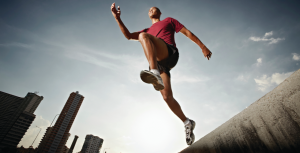 Did you know that RPM² footbeds were validated and reviewed by Dr. Kelly Brooks during her time as a professor at Texas A&M University, Corpus Christi? In February of 2013, Dr. Brooks conducted a review of our product, its technology, and its applications for athletes. The results of the review were published in a White Paper, which you can read in full by clicking here.
Did you know that RPM² footbeds were validated and reviewed by Dr. Kelly Brooks during her time as a professor at Texas A&M University, Corpus Christi? In February of 2013, Dr. Brooks conducted a review of our product, its technology, and its applications for athletes. The results of the review were published in a White Paper, which you can read in full by clicking here.
A Summary of the White Paper
Focusing on the importance of accurate gait analysis, Dr. Brooks explains that preventative gait analysis is important for measuring an athlete’s form and biomechanical movement to optimize and enhance athlete mechanics, especially during times of fatigue at the end of performance. She states that “proper mechanics will also increase performance by increasing running efficiency…Mechanics are key to success in all distances of running events, though improper mechanics during long distance runs will have a increasingly detrimental effect as the runner continues to train and stress their joints.” For the reasons mentioned above, Dr. Brooks believes that RPM² footbeds can proactively monitor issues with gait, weight distribution, and bilateral deficiencies so that athletes and trainers can address mechanical issues before they become problematic to the runner or cyclist. She notes that RPM² is user-friendly and cost effective when compared to expensive laboratory equipment.
About Dr. Brooks
Dr. Kelly Brooks holds a Ph.D in Human Performance (Environmental Physiology from the University of Alabama. She also earned a Master of Science in Kinesiology from Jacksonville State University. Her professional experience includes teaching and lecturing as a professor for Louisiana Tech University and Texas A&M University, Corpus Christi. Presently, she serves as the Editor-in-Chief for the Journal of Sport and Human Performance.
To stay up-to-date with the latest RPM² news, feel free to enter your e-mail address in the subscription bar on the right side of our page or join us on Facebook.
Sep 05
Key Fundamentals for Understanding Speed
 Improving speed is a common goal for any athlete. One thing that can help an endurance athlete overcome plateaus or push their performance to the next level is understanding the mechanics behind speed and adjusting training to achieve fluid, biomechanical movement. This week, our team at RPM² discusses important fundamentals that relate to speed.
Improving speed is a common goal for any athlete. One thing that can help an endurance athlete overcome plateaus or push their performance to the next level is understanding the mechanics behind speed and adjusting training to achieve fluid, biomechanical movement. This week, our team at RPM² discusses important fundamentals that relate to speed.
Bi-Lateral Equivalence
As mentioned in many of our previous blogs, achieving bi-lateral equivalence (bi-lateral symmetry) can dramatically enhance an athlete’s performance. Bi-lateral symmetry refers to a balance of power in the force exerted by each leg in movement. When athletes lack symmetry, it can affect their speed and even increase the risk for injury.
Power Output
Defined as the product of force and velocity, maximal power output can enhance speed and stamina in both endurance-related and sprint-related sports. Improving power output can influence the fluidity of movement and promote proper biomechanics. Common methods for boosting power output can be as simple as running at an incline or making weight and repetition adjustments in strength training.
Stamina
Also integral to athletic performance, stamina is often described as a cycle where an athlete maximizes power then recovers repetitively throughout the duration of activity. Ideally, stamina should allow an athlete to maintain proper form and movement during times of fatigue. Building stamina involves a commitment to rigorous training, even in off-season, with an emphasis on measureable goals.
Stride Length and Stride Frequency
The length of one’s stride allows an athlete to perform more efficiently by maximizing the amount of distance covered. Improving stride length is typically achieved by increasing power output and developing optimal direction force. Increasing stride frequency requires an athlete to work on developing proper positioning and form along with isolating muscles in the hips and lower abdomen in strength training and conditioning.
RPM² is a unique footbed device that measures bi-lateral equivalence, gait, range of motion, and weight distribution so that discrepancies in movement can be identified and addressed in training. The information gathered by these revolutionary shoe inserts is sent to your smart phone or tablet in the form of an app to help you or your trainer adjust your training to improve performance.
Aug 21
Common Injuries in Runners: Shin Splints
 Every runner has felt a throbbing or dull pain along the shin bone, often accompanied by mild swelling, at one time or another. This common overuse condition is called shin splints, and it is characterized by inflammation of the shin bone (tibia) and surrounding muscles, tendons, or other soft tissues. Fortunately, this condition, formally called medial tibial stress syndrome, often resolves itself with conservative treatments.
Every runner has felt a throbbing or dull pain along the shin bone, often accompanied by mild swelling, at one time or another. This common overuse condition is called shin splints, and it is characterized by inflammation of the shin bone (tibia) and surrounding muscles, tendons, or other soft tissues. Fortunately, this condition, formally called medial tibial stress syndrome, often resolves itself with conservative treatments.
What Causes Shin Splints?
The simple answer to this question is, “Overdoing it.” A stress injury, shin splints often occur when you make a sudden change in your training rather than gradually working up to a new regimen. This may include suddenly increasing the frequency, duration, or intensity of exercise or running on new terrain without proper conditioning. Other risk factors include overpronating when running or having flat feet or high arches. The condition is often one-sided and occurs in the runner’s dominant leg.
How Is the Condition Treated?
The first thing you should do when you experience shin pain or swelling is to stop running and ice the injury. Non-steroidal, anti-inflammatory medicines such as ibuprofen can ease the discomfort, and a compression bandage may help keep swelling down. Rest is essential, and your trainer and physician will advise you on how long you need to rest before you can return to your previous level of training and what types of strengthening and stretching exercises can promote healing. You may be allowed to perform lower-impact exercises, such as cycling or swimming, while your injury heals. As a preventive measure, your physician may also prescribe custom foot orthotics to correct flat feet or other biomechanical issues.
What Other Conditions Could Pain in the Shins Indicate?
Shin pain can point to injuries more serious than shin splints. If the pain occurs on the outside part of the leg, you may have compartment syndrome, which is a swelling of muscles closed off in a pressure-filled compartment. Surgery may be required to alleviate the pressure. If you run your finger along your shin and feel a single point of sharp pain rather than pain in a more generalized area, you may have a stress fracture in the tibia. This is a small crack in the shin bone caused by overuse, and its healing time is considerably longer than that of shin splints.
To determine if your running biomechanics are affecting your performance, explore our website to learn how RPM2 works. Monitoring your running performance remotely, RPM2 footbed inserts detect issues with bilateral equivalence, which can be addressed in your training regimen to enhance fluid biomechanical motion and help you achieve your athletic goals.

